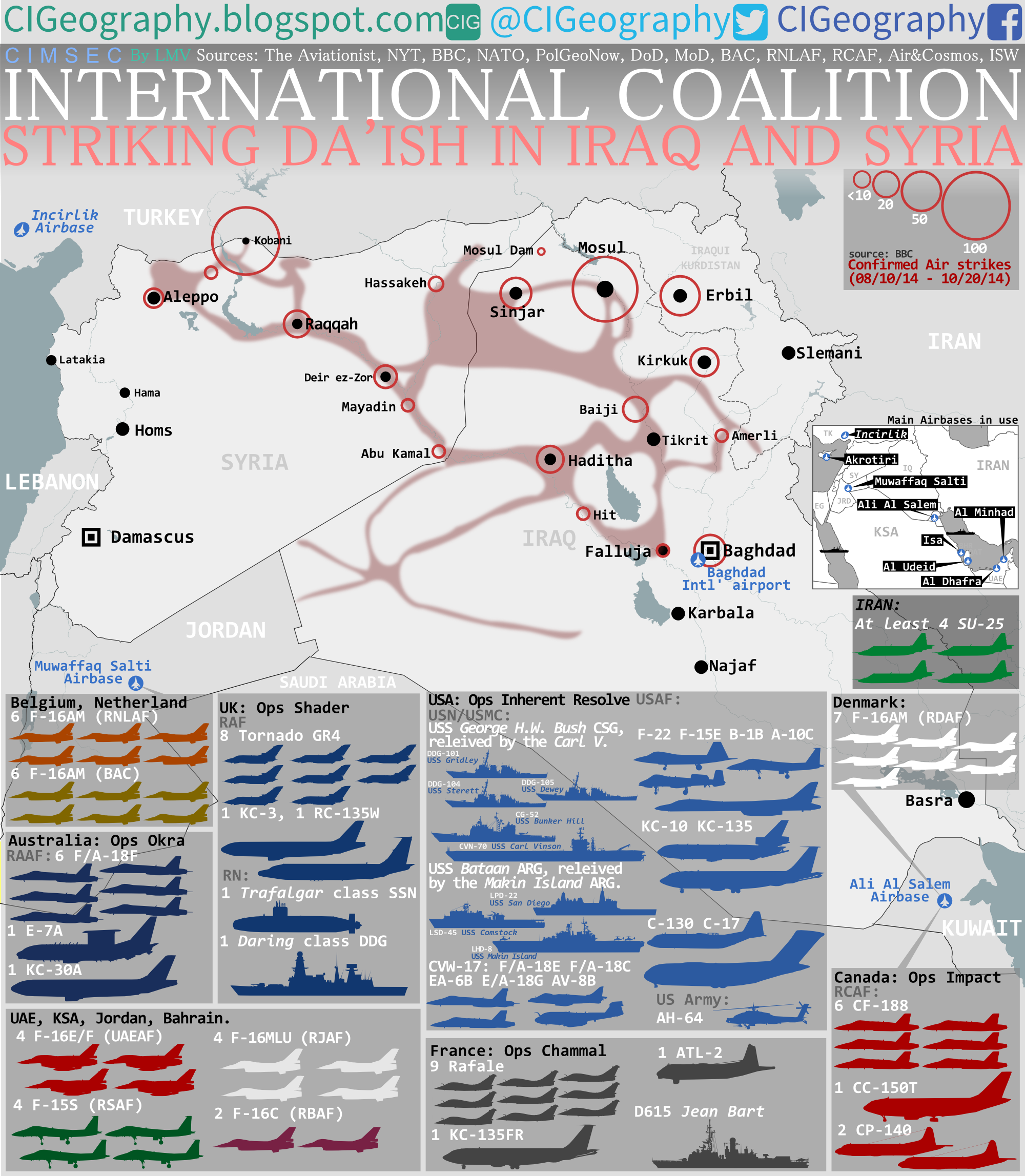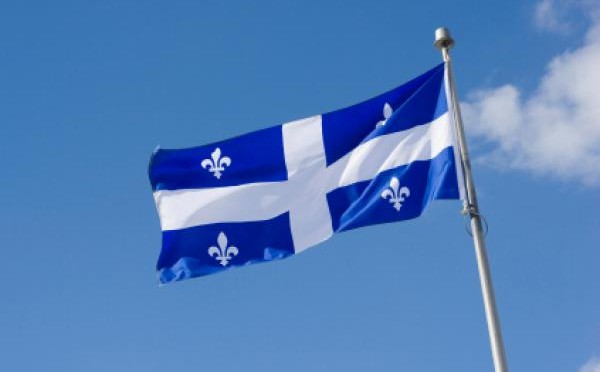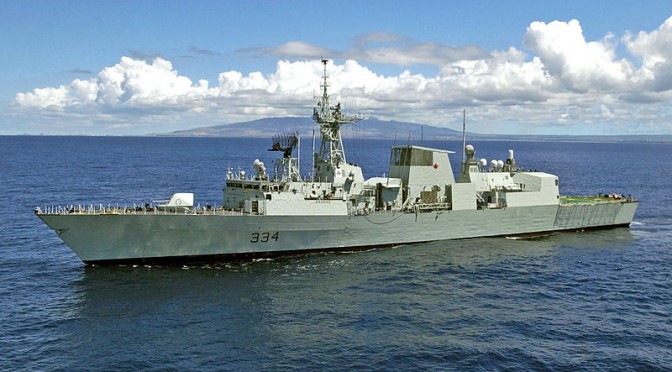Tag Archives: Canada
RIMPAC 2014 – The Ins and Outs
On June 26th, one of the world’s largest and most significant naval exercises began in and around Hawaii. Rim of the Pacific (RIMPAC) is a biannual event led by the United States Navy and usually involves maritime forces from more than n Pacific countries, including Canada. Although the exercises have been held consistently since 1971, this year’s edition promises to have an unprecedented impact on military and strategic affairs in the Asia-Pacific region.
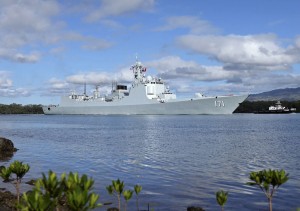
Of particular note, 2014 marks the first time China participates in RIMPAC. Previous editions have involved regional neighbours, like Japan and South Korea, but curiously excluded the People’s Liberation Army Navy (PLAN). Early this year, as planning was underway for the upcoming edition of RIMPAC, the US extended an invitation to China for the first time. However, the fallout from the Shangri-La Dialogue in Singapore on May 31-June 1 left considerable doubt that China would accept the invitation. It therefore came as a surprise when China formally accepted the invitation one week after the heated debate in Singapore. In a move that could help reduce regional tensions, four PLAN vessels have participated in the exercise, serving alongside ships from other participating countries, like Japan, the Philippines, and Canada.
This is also the first RIMPAC exercise for the small Southeast Asian state of Brunei. The Royal Brunei Navy is a rather small force, especially in comparison to the impressive naval might of nearby Singapore, but it has contributed two off-shore patrol vessels. These smaller ships, the KDB Darussalam and KDB Darulaman, are also Brunei’s newest acquisitions and so RIMPAC is viewed as an opportunity to test out their capabilities in simulations of large-scale maritime combat operations.
With Brunei, participation in RIMPAC increases among Association of Southeast Asian Nations (ASEAN) members to six out of ten, indicating a willingness by the bloc to become more actively involved in Pacific security. The four member states not participating in 2014 either lack the capacity to participate, such as landlocked Laos, or they were not invited to participate, such as the despotic regime in Burma.
While China and Brunei are in this year, Russia is out. In 2012, Russian maritime forces joined RIMPAC for the first time. Three vessels took part, led by the destroyer RFS Panteleyev, which had previously served alongside NATO forces as part of Operation Ocean Shield. But with tensions rising over Russia’s actions in Ukraine, no invitation was extended to join RIMPAC in 2014.
In May 2014, Russia and China held a large-scale joint naval exercise of their own in the East China Sea, but Russia has otherwise been left isolated in Pacific military affairs since the Crimean crisis. Aside from supplying Vietnam with new submarines and other vessels, Russia has scant opportunities to build security ties with the countries of Southeast Asia, stalling any effort by Vladimir Putin to pivot eastward. This suggests that any ‘soft power’ influence Russia may have had is now in severe decline, with many governments in the region reluctant to trust or engage with Putin.
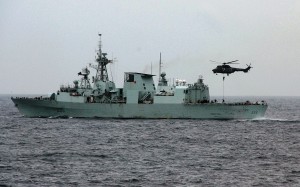
RIMPAC 2014 is also a significant opportunity for Canada to demonstrate its capacity to become a major player in the Pacific. This has clearly not been lost on Canadian defence officials as there is a considerably increased contribution from Canada as compared to 2012, despite the fact that many Royal Canadian Navy vessels are either undergoing repairs or are being retrofitted. This time, Canada’s fleet is led by the HMCS Calgary, a Halifax-class frigate, joined by a Victoria-class submarine and two Kingston-class patrol vessels. As RIMPAC is a combined arms exercise, Canada has also sent an infantry company from the Third Battalion, Princess Patricia’s Canadian Light Infantry to act as marines, while a Royal Canadian Air Force component will be deployed that includes eight CF-18 Hornets.
By involving all three elements of the Canadian Forces, it will be possible to demonstrate Canada’s ability to participate meaningfully in a multilateral intervention in the Pacific. As tensions between countries in the Asia-Pacific region are enflamed, discussion surrounding the potential for a Pacific equivalent to NATO occasionally surfaces. By showing leadership through RIMPAC and developing interoperability with countries ranging from Brunei to China, Canada secures a place at the table for itself in case those discussions ever turn serious.
Paul Pryce is a Research Analyst at the NATO Council of Canada and CIMSEC’s Director of Social Media. With degrees in political science from universities in both Canada and Estonia, he has previously worked as a Research Fellow at the OSCE Parliamentary Assembly and an Associate Fellow at the Latvian Institute of International Affairs. His research interests are diverse and include maritime security, NATO affairs, and African regional integration.
Disclaimer:
Any views or opinions expressed in this article are solely those of the authors and the news agencies and do not necessarily represent those of the NATO Council of Canada. This article is published for information purposes only.
This post appeared at the NATO Council of Canada in its original form and was cross-posted by permission.
The Quebec Wars
Daniel S. Matthews brings us this fourth article for our Sacking of Rome Series.
It is the unexpected turns that vex empires the most. Rome did not expect Hannibal to cross the Alps, the French did not expect the dramatic events of Quiberon Bay, the British had their guns pointed the wrong way at Singapore, we were not prepared for World War III to start in Canada.
 Thought of Canada being the region where the sparks for World War III will be struck may not seem likely, but there is one area where a foreign foe could surprise the West: Quebec. If Quebec were to secede from Canada, two unsettling possibilities could occur. The first is that Canada could go to war with its wayward province. The second is that some power like China or Russia could build an alliance with Quebec. While such possibilities are unlikely, there are means of defense.
Thought of Canada being the region where the sparks for World War III will be struck may not seem likely, but there is one area where a foreign foe could surprise the West: Quebec. If Quebec were to secede from Canada, two unsettling possibilities could occur. The first is that Canada could go to war with its wayward province. The second is that some power like China or Russia could build an alliance with Quebec. While such possibilities are unlikely, there are means of defense.
The Canadian Civil War
If Quebec were to secede from Canada, there are several points that could spark a civil war between the two. The least likely would be national pride. There are several economic reasons that could provide the tinder for war. Quebec controls the mouth of the St. Lawrence River, and Quebec could use that control to wage economic war with Western Canada. In addition, Quebec possesses significant reserves of natural resources that currently contribute to the North American economy on a free basis. An independent Quebec would change that. Finally, Canada proper would become a split country, with a third of Canadian provinces being geographically separated from the Capital. In light of the fact that no state wants to be divided, and Canada already has several fluttering independence movements, the urge to prevent further dissolution will be strong.
While it is true that Canada does not have a large military, and Quebec has none, it is not impossible for war to break out. The Quebec separatists have used violence before, most notably with the murder of Quebec Labour Minister Pierre Laporte, and it would be easy for a semi-independent Quebec to buy arms on the international market.
If Canada did get involved in civil war with Quebec, there are several options open to both sides if the war drags on. Canada could invoke Article 5 of the NATO treaty, which could split NATO as France has traditionally expressed support for Francophone Quebec. It is unlikely Britain would be unconcerned with a core Commonwealth state being embroiled in civil war; especially depending on how the vote for Scottish independence goes this year. The United States would be committed, as they are deeply intertwined with Canada at every level.
States like Russia, China, or Iran could use the distraction of a civil war in the very center of the Anglosphere to press their boundaries with the Western Alliance. Furthermore, they could start supporting the Quebec rebels, either directly or through third party means. If the war was presaged by an internationally recognized referendum, then Russia or China could take the position that they are upholding international norms, and paint the Western states in a negative light. Attempts at arming the rebels or openly supporting them would directly threaten the fundamental security of the United States, as it would provide a foothold on the continent from which hostile states could threaten the United States.
The Bear and the Dragon in Quebec

While the first scenario of a successful Quebec independence movement immediately descending into world war is unlikely, the far more dangerous one of an independent Quebec making allies with states hostile to the West is possible. An independent Quebec would have the full ability to make alliances with foreign powers, and it is unlikely they would be readily welcomed into NATO, NAFTA, or other treaties with the Western powers. Canada would put pressure on any attempts to allow Quebec a seat at the table, and European countries would be wary of admitting Quebec, as it could fuel separatist movements within their own countries.
In addition, the United States would not want the possibility of Canada dissolving, even if most of the providences would likely join the United States. This method of amalgamation would be undesirable, if for no other reason than there is no guarantee that each section of Canada would join the US, and a unified Canada is better for the US than a series of states on its northern border. The dissolution of Canada could also embolden separatist movements in the United States.
Given the internal danger to Western countries an independent Quebec would present, it is likely that Quebec would be forced to look for friends elsewhere. Russia and China are the most likely candidates. Both countries would be interested in the natural resources of Quebec. China and Russia would also both enjoy the prospects of helping to develop Quebec’s Arctic resources. In addition, the possibility of a military alliance with Quebec would present an opportunity not present since Alaska became part of the United States; a land connection to the United States.
Right now the Anglosphere is protected by its island status, with no major hostile powers sharing a land border with any member. An independent Quebec would be courted by hostile powers to allow such a chance thought. Russia would view it as retaliation for NATO expanding into the Baltics, Poland, and developing close relations with Ukraine and Georgia. China would view it as a chance to have a mirror for the US alliances in China’s First Island Chain, with the added bonus of a large land connection to the American heartland, as opposed to the slender one that the US has against China on the Korean peninsula. The presence of a near-peer competitor with bases on the North American heartland would greatly reduce the flexibility of Western countries as they exert their influence on the world. Such a situation would be more bothersome to the United States and its allies than the Zimmerman telegram of a century ago, or the presence of Soviet missiles in Cuba half a century ago. It would have the same effect as Germany’s race to rival Britain on the high seas before World War I.
Possible Western Responses
Despite the perils presented by an independent Quebec, there are steps that the US and its allies can take to mitigate the dangers. The easiest remedy would be to continue the integration of the US and Canada, so that Quebec does not have economic or cultural incentives to break away. In addition, the West should focus more on promoting its unifying cultural values internally to provide less fuel for separatist movements. The US and Canada should also do more to encourage English proficiency, to increase the bonds of unity within and between both countries.
Internationally, the West should focus less on supporting the forms of Western states, elections being a key issue, and more on cultural reforms such as the acceptance of the loyal opposition, freedom of the press, and the like. Encouraging every group that wanted its own state did not work well for the peace, freedom, and stability of Europe from 1815 to 1939; it is not going to work well elsewhere. Such an approach would help cement the cultural idea that it is undesirable for states to break up along ethnic lines.
Finally, if Quebec does become independent, the West must make every effort to keep them within the Western sphere of influence. The United States should immediately offer closer association with the rest of Canada to stress the message of unity. An independent Quebec can be offered membership in the trade agreements that the Western nations have with one another and limited military exchange. Alternatively, a Canadian confederacy could be proposed where Quebec has almost total control over domestic affairs, but for international relations, it would still be part of Canada.
Militarily, Quebec already has more ties with Western countries, as they have served in the unified Canadian armed forces since that country was formed. Quebec citizens have served alongside the armed forces of other Western nations and have developed close ties; therefore, they would likely want to maintain those bonds. This should be encouraged.
As a final point, if hostile foreign powers do make inroads to an independent Quebec, the US should step up integration with its allies militarily and economically so to prevent further wedges being driven between the parts of the alliance. Alliances are easier to break apart than unified countries, and neither Russia nor China would want to face a unified power stretching from Japan to Eastern Europe.
Lieutenant Daniel S. Matthews is currently assigned to Marine Corps University, preparing to take over the role as Naval Gunfire Liaison Officer for III MEF. He has served in a wide range of sea and shore billets. LT Matthews is a native of Warrenton, Virginia, and graduated from Old Dominion University in 2007.
Preparing for the RCN’s Future: Platform Growth and Naval Vessels
The Royal Canadian Navy (RCN) will begin replacing much of its fleet at the start of the next decade. To ensure that its fleet remains relevant over its thirty-plus years of service life, adequate platform growth potential must be factored into the design process of the new vessels.
The RCN has 15 surface combatants: three elderly Iroquois-class destroyers and 12 Halifax-class anti-submarine warfare (ASW) frigates. The ships of the former class were all commissioned in 1972 and the first will not be replaced until 2020 at the earliest. The Halifax were commissioned between 1992 and 1996 and the last unit will remain in service until it is replaced in 2033. All replacement dates are based on current estimates and assume no delays – an unlikely assumption given Canada’s procurement practices and the intricacies of systems integration on a new hull – and assume, of course, that there will be no project cancellation. Regardless, even in a best case scenario the last Iroquois will have served for an astonishing forty-eight years, and the last Halifax for thirty-seven years.
How can platform growth be incorporated into the fifteen-ship Single Class Surface Combatant Project? To answer this question it is useful to look at Canada’s most recent naval combatant class, the Halifax-class frigate, for lessons. The Halifax is a highly advanced warship by any standard. It is, however, primed for a single task: anti-submarine warfare (ASW). The mission requirement that determined the design was ASW for the purpose of protecting convoys in the Atlantic Ocean in the event that NATO went to war with the Soviet Union. For that mission it carries an impressive set of sonar and large numbers of anti-submarine munitions
Today the RCN has a very different core mission requirement: expeditionary operations. For this type of mission, the Halifax bow gun is inadequate for naval gunfire support and cannot take advantage of a series of new long-range naval ammunition built for larger guns. This shortcoming is made more acute by the fact that a smaller system cannot simply be replaced by a larger one unless sufficient hull volume has been allocated in the design. A similar shortcoming is its air defense system. The Halifax-class has no vertical launch cell system (VLS). VLS is a launcher system that is built into the deck to allow rapid launch of munitions. Additionally, it makes more efficient use of deck space and the ships’ volume. The Halifax-class cannot be retrofitted with a VLS system as adequate platform growth was not designed to allow for it. Instead, it has two Mark 48 eight-cell launchers that can only launch the RIM-162 Extended Sea Sparrow Missile (ESSM). As surface-to-air missiles go, this is a short-range system that allows the frigate only to protect itself.
A study of the Halifax-class frigate provides important lessons on why it is important to ‘design in’ platform growth on naval vessels – especially when they will be in service for many unpredictable decades. Perhaps the three-most important platform-growth requirements today are energy generation, deck space and internal volume, and VLS cells. Energy generation is important to ensure that the warship’s sensors, particularly its radar systems, can be replaced with more powerful, energy hungry sensors. Furthermore, it is quite likely that in the future naval vessels will be able to carry various types of direct-energy weapons (such as lasers) to deal with increasingly sophisticated and fast anti-ship weapon systems. To utilize such systems a warship must be able to generate sufficient electrical power.
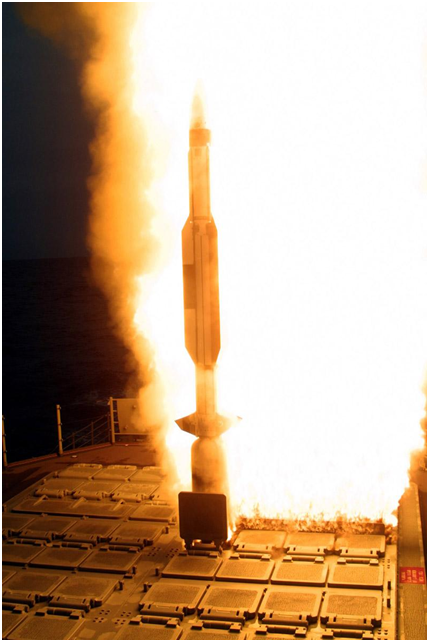
Deck space, internal volume, and VLS cells are related platform growth priorities. As the example of the Halifax’s naval gun has made clear, if the RCN intends to at least retain the option of arming its vessels with long-range naval guns for littoral operations then it must at least ensure that sufficient deck space and internal volume is ‘designed in.’ Moreover, the flexibility VLS cells provide makes them a priority for all navies today. The American Mark 41 VLS system offers a system that comes in varying numbers of cells and varying cell length/depth. The latter is important as the choice of cell length/depth determines what munitions can be launched from it. For example, should Canada procure a warship with the longest VLS length/cell, and if it hadn’t ‘designed in’ a margin of growth for cell length below deck, then it will be unable to ever fit its vessels with the current crop of anti-ballistic missile defenses and land-attack cruise missiles. This reduces the mission flexibility of a warship class and reduces their effectiveness over their service life. To overcome this, longer VLS cells can be procured or at least factored into the design – ‘designed for but not with.’ In a similar vein, space and volume can be allocated for VLS systems that can be added in the future.
Given past experiences it is likely that Canada’s next-generation of naval surface combatant will serve many decades into the future. Given the increasing importance of littoral/coastal operations, climatic change in the Arctic, and the need to undertake expeditionary operations, it is paramount that any naval vessel be designed with sufficient platform growth in mind. By doing so, the RCN will be able to hedge against an unpredictable fiscal, geopolitical and environmental future.
Shahryar Pasandideh is a third year student studying international relations and Middle Eastern studies at Trinity College, University of Toronto. He is interested in contemporary debates on grand strategy, maritime security, Sino-American and Sino-Indian strategic interaction, and the military balance in the Persian Gulf region.
Disclaimer:
Any views or opinions expressed in this article are solely those of the authors and the news agencies and do not necessarily represent those of the NATO Council of Canada. This article is published for information purposes only and was re-posted with permission from the Atlantic Council of Canada from its original form.


